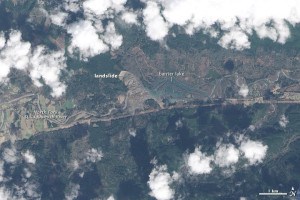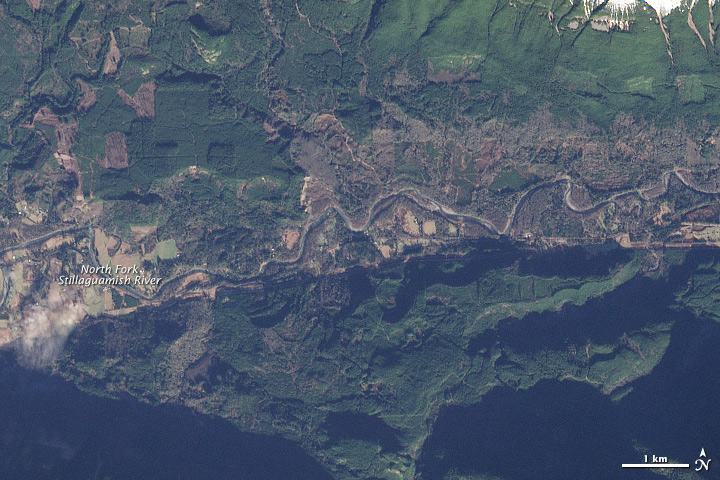Last year’s devastating landslide in Oso was no outlier, according to a new study from the University of Washington.
The landslide wiped out a neighborhood north of Seattle and left 43 people dead when it roared down a hillside above the north fork of the Stillaguamish River. It was the deadliest landslide in U.S. history.
In a novel method, university geologists used radiocarbon dating of trees and branches buried in earlier slides as well as a review of erosion characteristics to map the history of landslides in the area. They found that slopes in the area have collapsed every 500 years on average, and with even greater frequency in the past millennium: every 140 years or so.
The authors say the study disproves the notion that the previous slides in the area all occurred thousands of years ago after the ice sheets retreated.
“This was well known as an area of hillslope instability, but the question was: ‘Were the larger slides thousands of years old, or hundreds of years old?”‘ co-author Alison Duvall, an assistant professor of earth and space sciences, said in a news release. “Now we can say that many of them are hundreds of years old.”
Wading along the river’s banks, the team unearthed samples of wood buried in the Rowan landslide, just downstream of the Oso site, and the Headache Creek landslide, just upriver from Oso. The Rowan slide, which was about five times the size of the Oso slide, occurred 300 to 694 years ago, the researchers determined. The Headache Creek landslide was about 6,000 years ago.
The study’s results, published Tuesday in the journal Geology, could have implications for future land-use decisions in the region, including for logging, which can increase slope instability.
Duvall and another co-author, doctoral student Sean LaHusen, are reviewing the dangers of magnitude-9 earthquakes along the Cascadia subduction zone. They hope to learn whether landslides across Washington state coincided with past quakes, and use simulations of future shaking to determine what parts of the state may be most vulnerable to quake-triggered slides.
Other co-authors of the study included the University of Washington’s David Montgomery and Portland State University’s Adam Booth. The National Science Foundation, the Geological Society of America, and the University of Washington’s Quaternary Research Center provided funding for the study.
Was this article valuable?
Here are more articles you may enjoy.


 CoreLogic Report Probes Evolving Severe Convective Storm Risk Landscape
CoreLogic Report Probes Evolving Severe Convective Storm Risk Landscape  Supplemental Claims Don’t Need to Include Damage Estimates, Fed Appeals Court Says
Supplemental Claims Don’t Need to Include Damage Estimates, Fed Appeals Court Says  Travelers Survey: Distracted Drivers Making US Roads More Dangerous
Travelers Survey: Distracted Drivers Making US Roads More Dangerous  Property Restoration Industry: A Culture in Need of Repair?
Property Restoration Industry: A Culture in Need of Repair? 